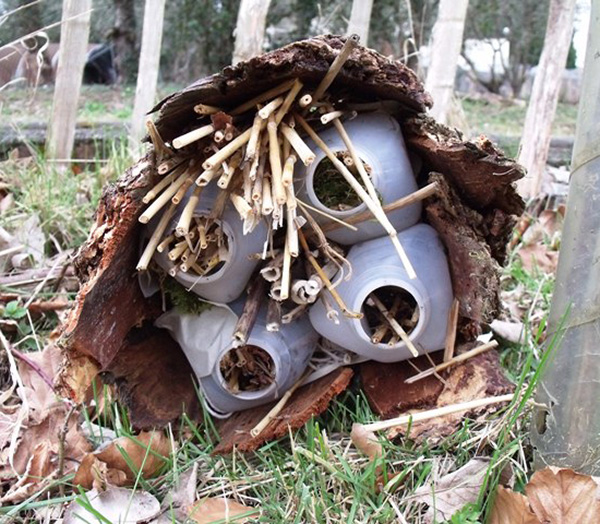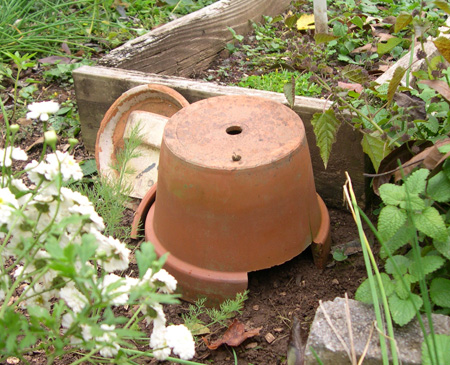Do It Yourself - Bug & Beast Habitats
Look at the website of any conservation organisation, and you will find plenty of bird and bug houses to buy. But in the spirit of recycling, we decided to try making our own. Here are some ideas for a bug house, a bird roost, and a frog house for the cost-conscious wildlife gardener. These are good projects to teach children a bit about wildlife gardening.
Bug houses
 It’s perfectly possible to create your own bug house using old plastic jars, and a variety of fillings. Soup or fruit jars, or Tetra-Pak containers are perfect, as they tend to be almost square, so fit together well. Tape or glue four together in a square, with the mouths all facing the same way. Gather together suitable filling: drinking straws, cut to the length of the jars, will provide good insect homes, as will dry leaves, straw, twigs, and shredded paper. Be creative, and think about what bugs seem to like. Keep each jar different, and with only one filling, to provide several different habitats.
It’s perfectly possible to create your own bug house using old plastic jars, and a variety of fillings. Soup or fruit jars, or Tetra-Pak containers are perfect, as they tend to be almost square, so fit together well. Tape or glue four together in a square, with the mouths all facing the same way. Gather together suitable filling: drinking straws, cut to the length of the jars, will provide good insect homes, as will dry leaves, straw, twigs, and shredded paper. Be creative, and think about what bugs seem to like. Keep each jar different, and with only one filling, to provide several different habitats.
Once finished and filled, decide on a suitable place for your bug house. This should ideally be out of the way, and somewhere that’s not over-frequented. Cover it with topsoil or garden soil, to make it dark and appealing to insects, and leave it for the winter.
Bird roosting pocket
Bird roosting pockets, as supplied by nature organisations, are small closed-top round baskets with two holes, one front and one back, and a hanging wire or two to hold it in position. We made ours from an old 4-pint milk carton. Either paint it dark with non-water soluble paint, or cover it with dark-coloured material using craft glue. Cut small holes in two sides of the bottom half, about the same size as in a nestbox, and pierce some small holes in the bottom for drainage. Put some comfortable stuff in the bottom such as shredded paper, wool, or dry leaves and replace the lid. Use wire around the handle, and if necessary, through another hole on the other side, to hang it in a suitable bush or climber.
Frog houses
 Bought frog houses are ceramic boxes with a roof and door. We chose an old flower pot, and propped it up on some broken crocks leaving a space for a ‘door’. The most important part is choosing a suitable site. For frogs, it should be damp and away from people: behind a shed or at the back of a flower bed, with the entrance hidden from sight is ideal.
Bought frog houses are ceramic boxes with a roof and door. We chose an old flower pot, and propped it up on some broken crocks leaving a space for a ‘door’. The most important part is choosing a suitable site. For frogs, it should be damp and away from people: behind a shed or at the back of a flower bed, with the entrance hidden from sight is ideal.
And once you’ve placed your wildlife homes, leave them alone. Don’t be tempted to keep investigating them, as this defeats the point. You’ll just to have to hope that your local wildlife is using them.
